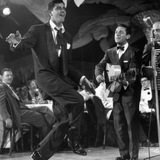
Subscribe to a channel


 109
109
Telegram-канал smorgasbordmusik - SMORGASBORD musik
 109
109
SOUNDTRACKS OF OUR LIVES. Our neighbors listen to GOOD MUSIC whether they like it or not. MAKE MUSIC NOT MISSILES.